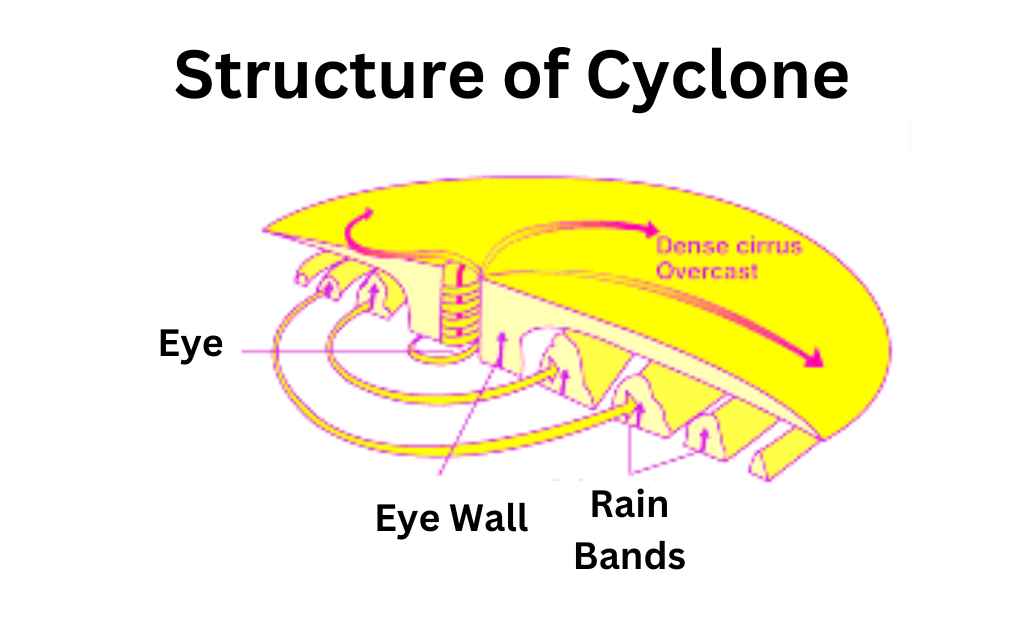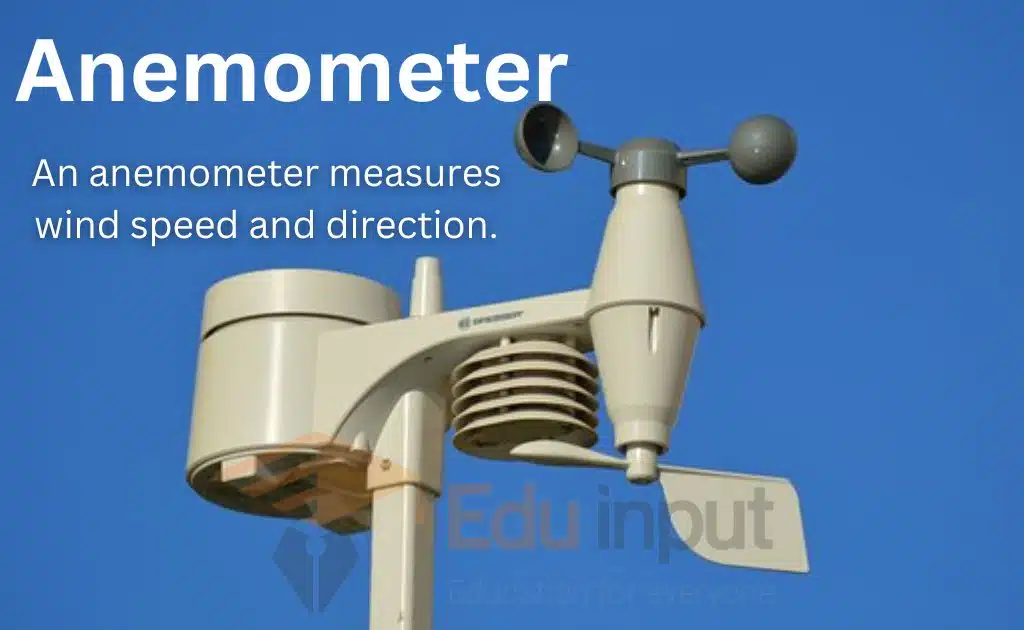Destruction Caused by Cyclones-Structure and Other Consequences
A cyclone is a large air mass rotating counterclockwise in the Northern Hemisphere and clockwise in the Southern Hemisphere around a powerful center of low atmospheric pressure (opposite to an anticyclone). Winds that spiral inward and revolve around a region of low pressure define cyclones.
What Is A Cyclone?
cyclone is any significant system of winds that revolves counterclockwise to the north of the equator and in a clockwise direction to the south around a center of low air pressure.
Structure Of A Cyclone
There are some structural features that all cyclones share. A cyclone is a region of low pressure. The region with the lowest air pressure is the center of a cyclone, which is frequently referred to as the eye in mature tropical cyclones.
The Coriolis effect and pressure gradient forces must roughly balance each other towards the center of the cyclone to prevent the cyclone from collapsing inward due to the pressure gradient caused by the difference between the pressures inside and outside the cyclone.

Destruction Caused by Cyclones
A cyclone’s size, position, and severity all affect how much havoc it causes. Trees are uprooted and canopy quality is impacted in forested areas. Dunes in deserts are continually changing, whereas mud and landslides happen in mountainous areas. Three categories of risks can be distinguished as a result of a cyclone’s impact on a region:
Primary Hazards Of Cyclone
Storm surge floods, inland flooding from heavy rains, severe winds, tornadoes, high surf, and rip currents are some of the dangers associated with tropical cyclones (which include tropical depressions, tropical storms, and hurricanes).
Storms, strong winds, and rain are the main threats. The low-lying areas close to the coast are drowned as a result of anomalous sea level rise, which also devastates flora and soil fertility and drowns people, their livestock, and their homes. Strong winds cause significant property and lives lost by damaging houses, trees, communication lines, etc.
Secondary Hazards Of Cyclone
Landslides, which can leave people homeless and disrupt highways and railroads, are some of the secondary effects. Problems with evacuation and challenges for emergency services may result from this. Food and clean water shortages are also possible.
Flooding from freshwater, fire, and other secondary dangers. Floods in rivers brought on by lengthy and heavy rainfall drown neighboring populated areas, erode valuable farmland, and destroy structures. Strong winds in forested areas cause forest fires, which spread with cyclonic severity.
Tertiary Hazards Of Cyclone
Water poisoning, diseases brought on by stagnant water, and an increase in the cost of goods and resources are examples of tertiary hazards.
Sometimes, all of the aforementioned risks come into play at once, making relief efforts challenging. Transportation and communication for rescue operations and cleanup tasks become incredibly challenging as the water level in the streets rises.
Cyclone-related fatalities are fairly common. Nearly two million people have died globally due to cyclones and their aftermath. Low-intensity cyclones are helpful because they transport heat from the tropics and bring rain to arid places despite their destructive impacts. In the area of navigation, they can be helpful at times.

 written by
written by 


